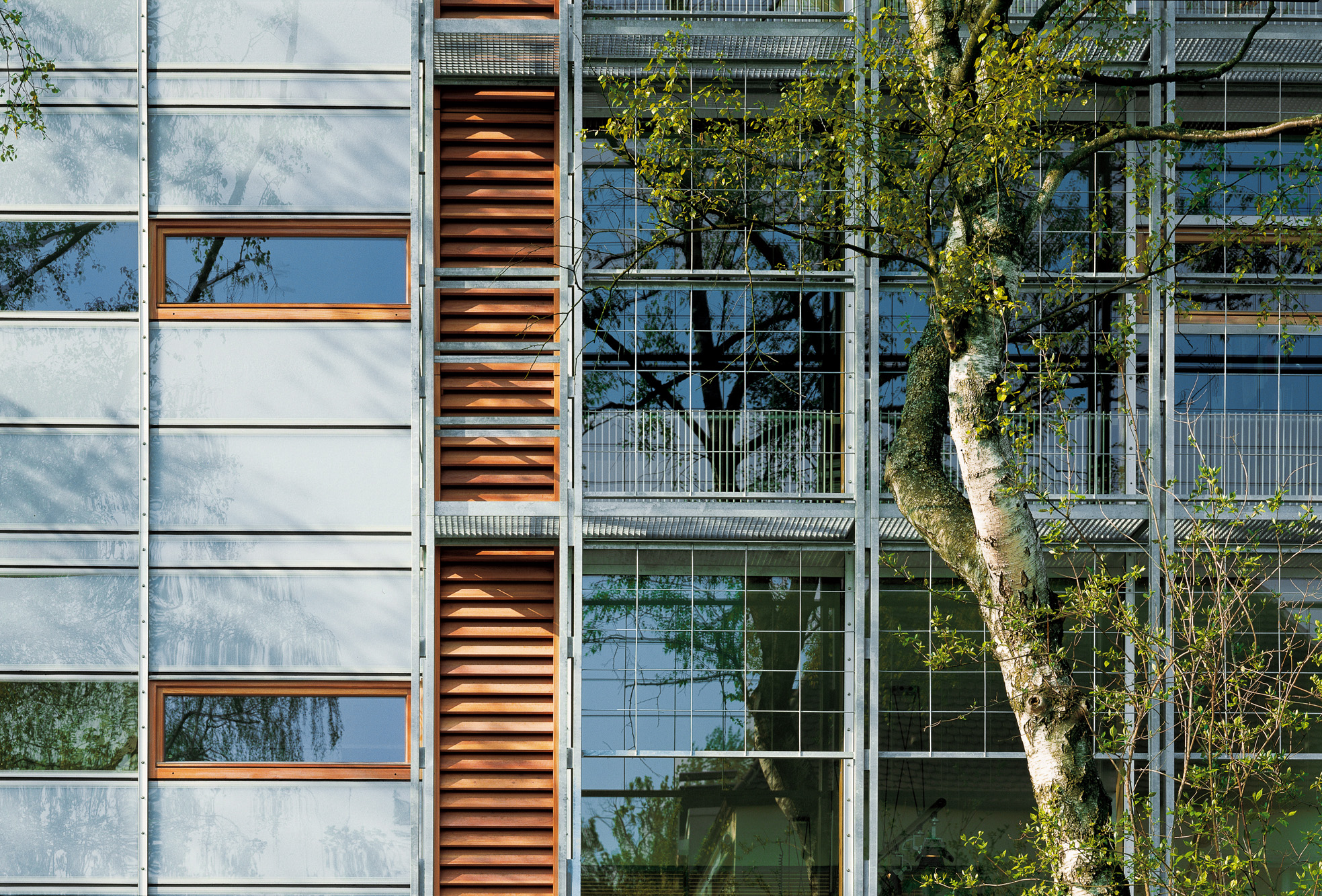
Since its foundation 1972 the architectural practice THOMAS HERZOG ARCHITEKTEN has been committing itself to a development and cultivation of the modern age. The task is to exercise social responsibility and to participate actively in the scientific and technological progress as well as to integrate aspects relevant for the environment in multiple ways – specially the possibilities of solar energy.
New concepts are developed in interaction with research institutions and departments from universities, e.g. the ‘Fraunhofer-Gesellschaft’ (Fraunhofer Association), the Technische Universität München (TUM), ‘Centre for applied Energy Research of Bavaria’ (Zentrum für angewandte Energieforschung Bayern e.V.). Urban planning pilot projects, pioneering buildings, prototypes of building systems and components are created as a result of these knowledge-based design task. The realisation is usually carried out with local partners.
All of this is always carried out with a special demand on aesthetic quality. The form is not predetermined, but is created depending on the task as a result of the design process as the case may be. It is called ‘performance form’.
Consequently this characterises the working method of the architectural practice. The problem definition and the specific marginal conditions are examined and interpreted systematically.
Different alternatives of several solutions are found on the basis of the basic philosophy of the architectural practice and they are documented with comments.
In the case of building projects the local climate data is recorded besides the usual investigations as to, among others, access and positioning of the building.
A dominant interest and scope of the work of the practice is to develop a composition, which includes both, building structures as well as the surrounding landscape and public spaces, to reach a maximum of overall harmony of the architectural design.
Using computer simulations the effects to the form of the buildings, the positioning, the possibility of making use of solar energy for heating purposes, cooling, ventilation and power generation to ensure comfort, are investigated. The solutions are found gradually in workshops together with the engineers.
The client is a part of this process.
Decisions remain transparent.
Prof. Thomas Herzog